‘Vehicle was swaying left and right’: Malaysian trapped in bus during Pahang flood recounts experience
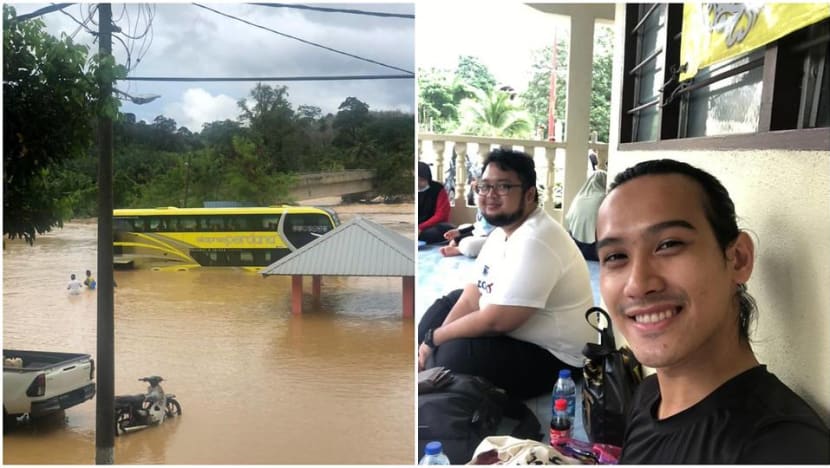
Farys Nordin and 41 others were trapped in a bus after it became stuck amid swirling floodwater. (Photos: Farys Nordin)
KUALA LUMPUR: It was already late on Jan 4, but the 42 passengers on a sleeper bus from Kota Bharu to Kuala Lumpur were wide awake.
Along the way, the bus had encountered a flood at Jeram Besu in Pahang state, as a result of a torrential downpour during the annual monsoon season.

Relentless rain for three days into the new year left various parts of peninsula Malaysia, including many areas in Pahang and Johor, flooded.
One of the passengers on the bus was Mr Farys Nordin, who was returning to his home in Kuala Lumpur after attending a friend’s wedding in Kelantan.
He recounted the harrowing experience during a phone interview with CNA a week after the incident.
“Nobody was sleeping because we were all worried. Then we heard that the engine died as we moved into the water,” said Mr Farys, 26.
When he looked outside the window, he realised that the floodwater had risen over the roofs of surrounding buildings. The lower deck of the double-decker bus was submerged in swirling floodwater.

“Passengers from the first deck then rushed up to where the rest of us were. Some of us started to panic,” recounted Mr Farys.
He added that the cabin lights were flickering on and off. The air conditioning was no longer working.
“The whole vehicle was swaying left and right, and the water was swirling fast around the bus."
RESCUED BY LOCAL VILLAGERS
But thankfully for the passengers, villagers who had taken refuge on top of a hill spotted the bus being submerged and noticed that passengers were trapped inside.
They sent a rescue boat to the site and transported the passengers back to the hill where it was safer.
“We opened the emergency exit on the second deck, and the boat could stop there. We all had life jackets from the bus and took turns to hop onto the boat,” said Mr Faris.
The boats transferred the passengers four at a time, crossing a lake that did not exist prior to the flood.
“Sitting on the boat was scary with sounds of water all around, and the boat was a little wet. But we felt safer on it than the bus,” he added.
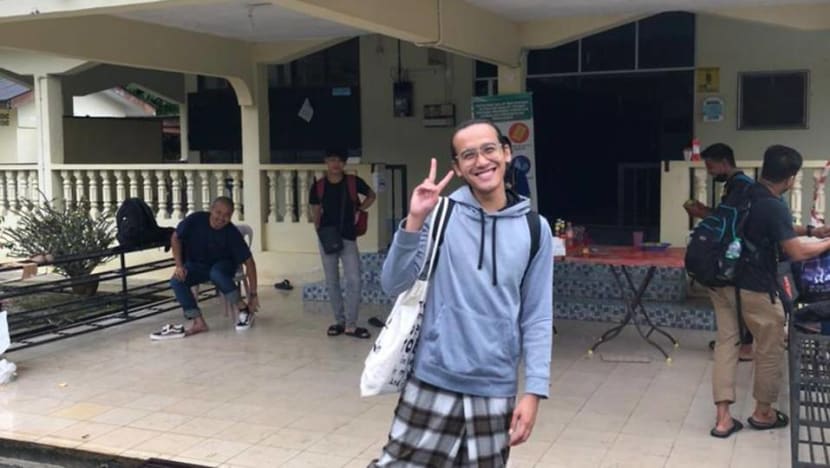
Mr Farys and his fellow passengers were then taken to a mosque – Masjid Jeram Besu, where they could settle for the night. There, they met local villagers who had been evacuated since the flooding started at 6pm that evening.
The passengers were able to access the Internet and contact their families to reassure them that they were safe.
When they woke up the next morning, they learnt that locals had prepared some food for them – fish crackers, nasi lemak, plain rice and sardines.

“It was simple food but they tasted so good, especially since we were all starving,” said Mr Farys.

They spent the rest of the day trying to recover their belongings from the bus’ luggage compartment, which was completely submerged in water the previous night.
When the water level subsided at around 4pm, some of the passengers and local villagers waded into the shallow waters and retrieved the bags.
The bags were filled with brown mud and in some cases, even destroyed.
Mr Farys found his white t-shirts smeared with brown slush, and his leather bag covered in sticky mud.
The passengers then received news that a replacement bus was waiting for them on the other side of the town.
“When we took a boat, we saw that the flood had destroyed many parts of the village. The water was still deep in many areas, covering traffic signboards and trees,” recounted Mr Farys.
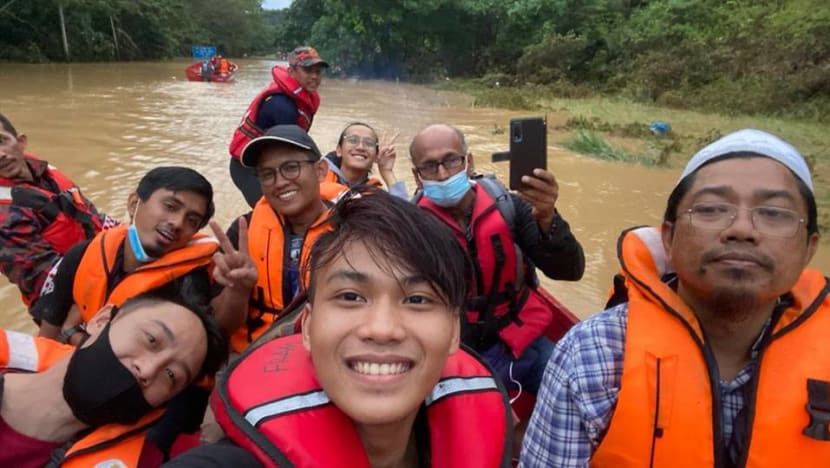
A fireman he spoke to said that the water level was around 2m deep.
Their bus was escorted by the police until they reached Raub, a town in Pahang, before resuming the remainder of their journey.
When asked how he felt about the whole incident, Mr Farys said he was grateful he came out of it alive.
“No doubt it was an imperfect trip. We had to sleep in a mosque, our things got ruined but when I reminisce these moments, I remember that there were others who suffered worse. Some villagers (in Pahang) lost loved ones or their homes. I have to be thankful,” he added.
As of Friday morning (Jan 15), there were around 8,000 people at 102 flood relief centres in Pahang.
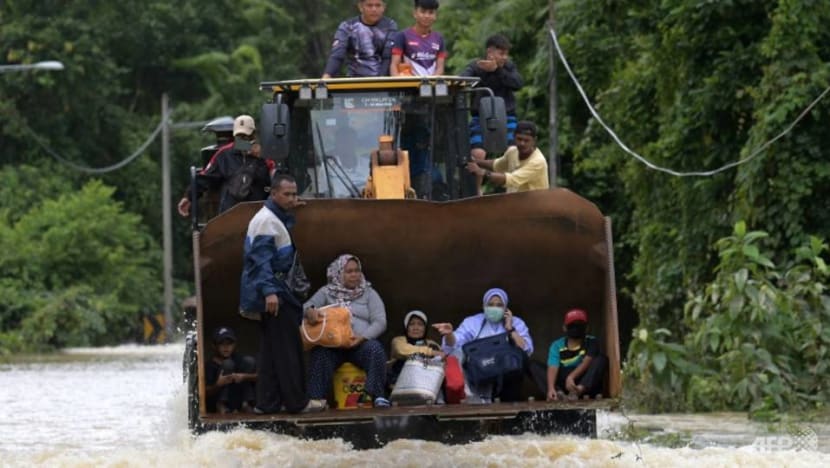
On Jan 10, Prime Minister Muhyiddin Yassin visited some of the residents who were relocated to relief centres in Temerloh and Maran.
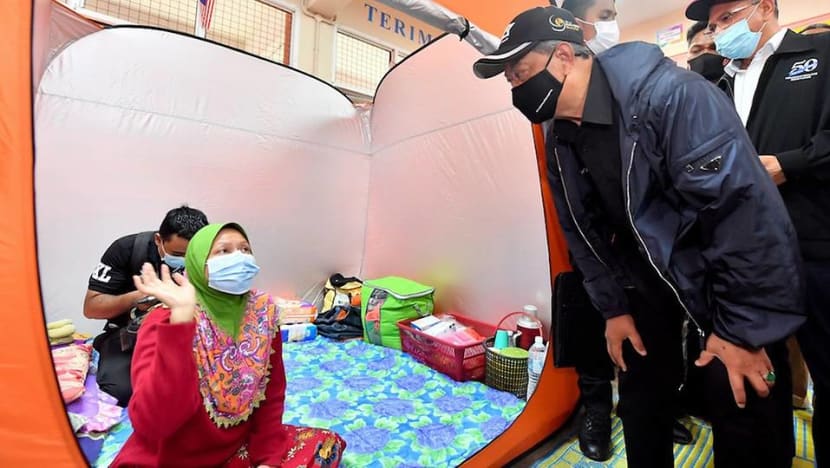
During the visit to Pahang, he spoke to flood victims and handed out food kit contributions.
According to Bernama, Mr Muhyiddin gave the residents words of encouragement to keep their spirits up and assured them that the government will help them recover from the flood.














